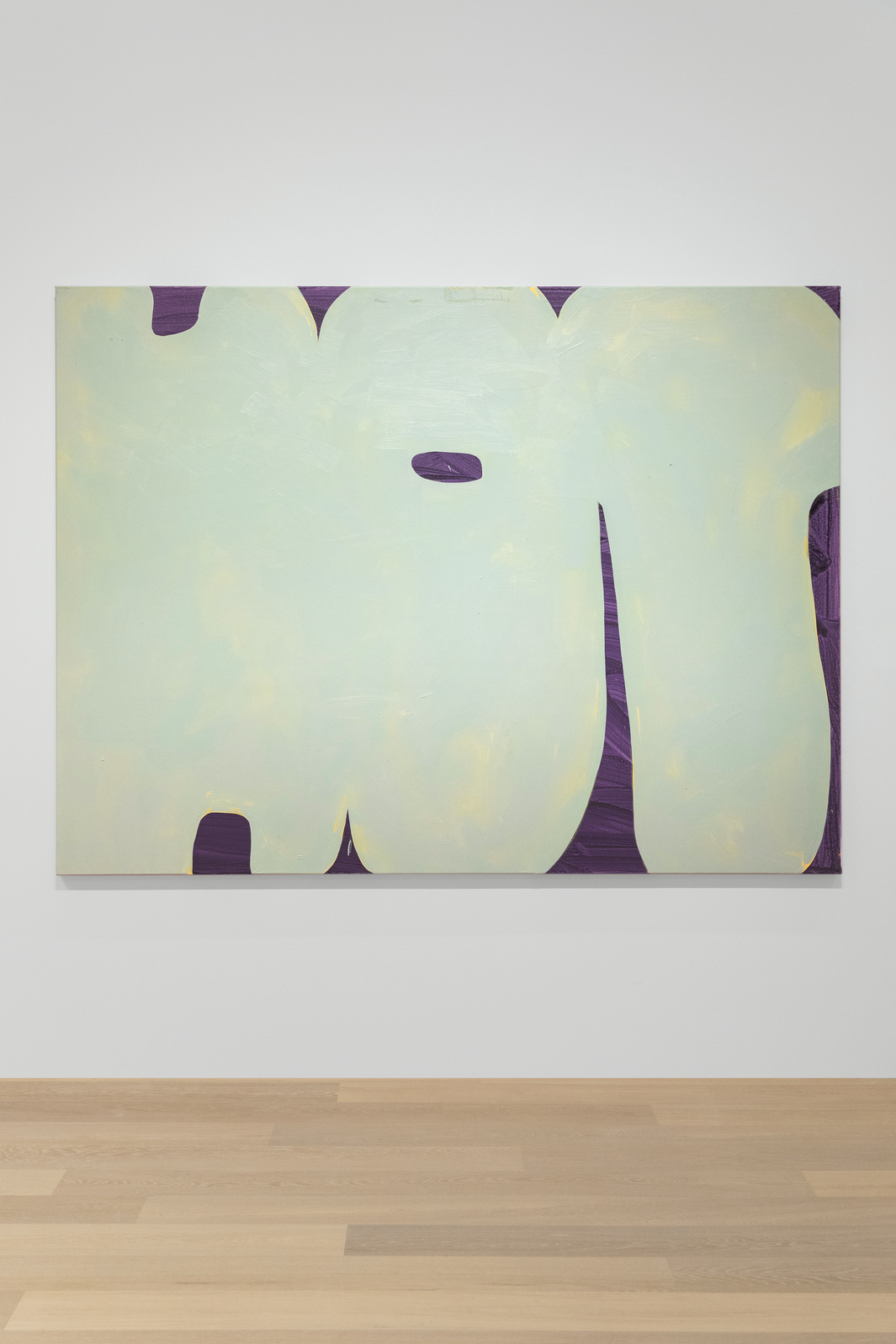
When MTV was at its peak, Erwin Wurm received a phone call from famed music video director Mark Romanek, who asked to use the Austrian artist’s work in a video for the Red Hot Chili Peppers’s 2002 bop “Can’t Stop.” “I didn’t know the Red Hot Chili Peppers [back then], I have to confess,” Wurm said in a recent conversation with the SCAD Museum of Art’s chief curator Daniel S. Palmer and curator Ben Tollefson. Despite his lack of familiarity with the band’s output, Wurm took the opportunity to collaborate with Romanek and became one of the first artists to get credited on MTV, which, according to Palmer, was “a legendary moment.”
Over two decades later, Wurm is now a household name for art lovers and pop culture devotees around the world. Earlier this month, he sat down with Palmer and Tollefson for an artist’s talk at the SCAD Museum of Art, where his exhibition “Hot” is currently on view through Jan. 15, 2024. The show takes place in two of the museum’s main galleries including the André Leon Talley Gallery.
In the former, Wurm showcases his experimental works in various mediums—including the “One Minute Sculptures” series that inspired the Red Hot Chili Peppers music video. The latter space focuses on the artist’s intersection with the world of fashion, featuring photographs and sculptures that turn designer garments into warped interpretations of the human body.
Below, Wurm’s conversation with the show’s curatorial duo has been exclusively shared with CULTURED. The beloved artist touches on his vision of sculpture, why he’s used himself as a model, and turning viewers into works of art.

Daniel S. Palmer: The relationship of the human body and everyday objects is something that's been at the core of your work for a long time.
Erwin Wurm: I wanted to become a painter, and when I tried to apply to an art school, they didn't accept me in the painting class. They put me in a sculpture class. This was frustrating. After a while, I accepted it and started to take it as a challenge. From that point on, I started to ask questions about what sculpture is. I tried to combine three things: the body, the social aspect, and the sculpture issue. As an artist, I relate to the time [that] we live in. How can we live in a world with seven billion universes? We all have to get together in a way to make it possible to live together in peace.
Ben Tollefson: Speaking of your time in art school—wanting to join the painting department, and eventually going into sculpture—it makes me think about your “One Minute Sculptures.” They put you on the map as an artist. Can you talk about how they came to be?
Wurm: When you work as a sculptor, you realize you are dealing with heavy, serious materials like wood or stone or metal. Michelangelo said a sculpture should be able to roll down a mountain and still exist for 500 or 1,000 years. That's a very different concept than we have today. We live in a short-living world. This is a tragedy, and a strategy, of our world. One minute is just a synonym for short. It doesn't matter if it's two seconds or two minutes.
When we do something—brushing our teeth, doing our nails, or combing our hair—it's an action. But is it possible to transfer this into a sculpture? Do I have to slow it down into slow motion, or do I have to squeeze it in time to make it realized as a sculpture? When we stand in front of a 3-D sculpture, we have to walk around to really understand it. This costs time, and time is always an important part in sculptural work.
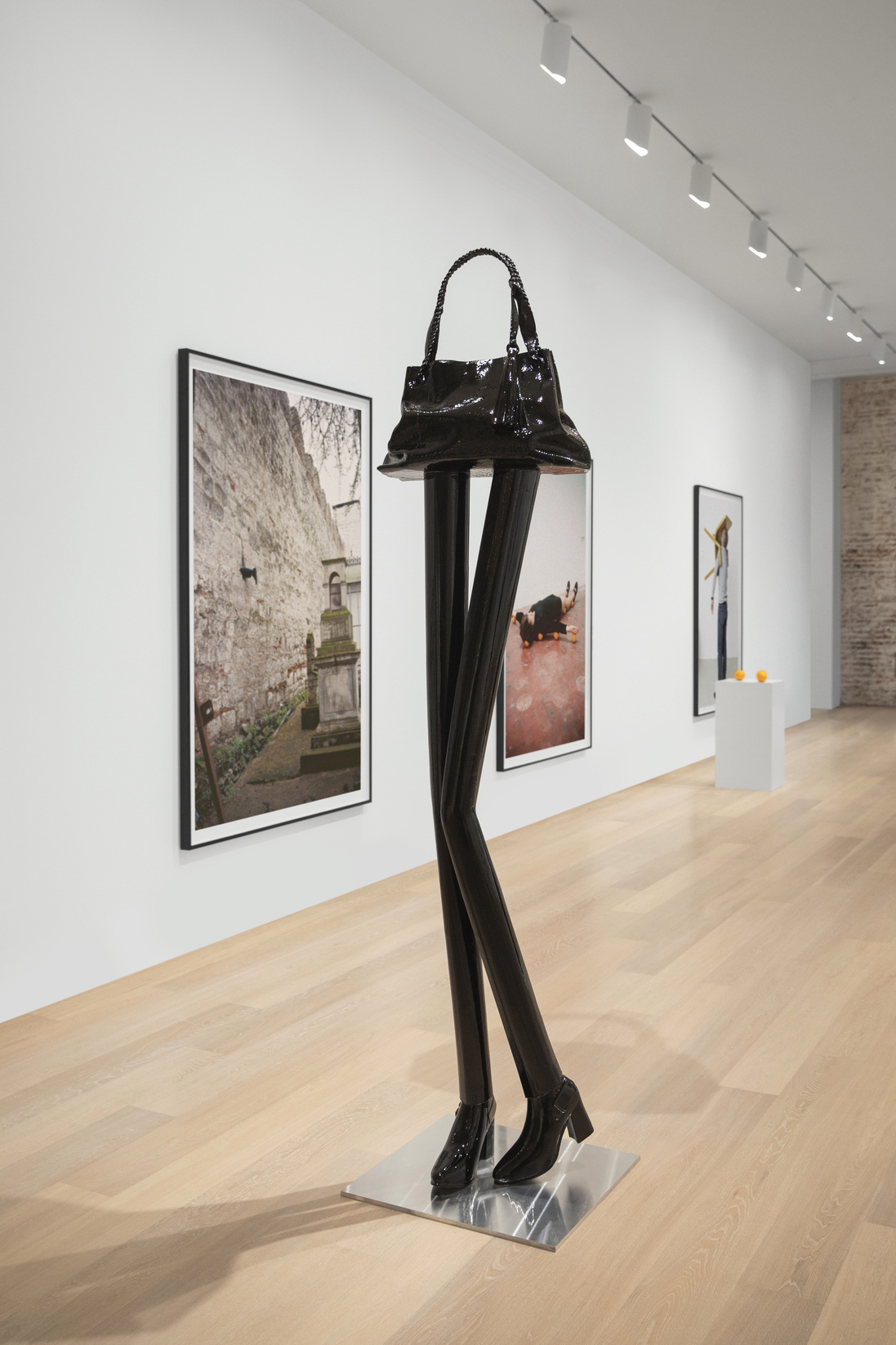
Palmer: That's a shift of our expectations about how art functions. We talk a lot about the role of the artist and the act of creating it, but in your work, you really are opening up a space for participation in all of the different ways that are happening when we experience art.
Wurm: For me, the important part is when I invite people to follow my instructions, to follow my drawings, and to step on the platform. By following my instructions, they transfer from a spectator into an object. All of a sudden, they are looked at. When you make pieces which are very ephemeral, and you invite somebody to follow instructions, or you do it yourself, they realize the piece.
It takes half a minute or a minute or two minutes, and then it's over. I started to make snapshots of the “One Minute Sculptures.” I was a very bad photographer. When I see my early photographs, I'm laughing because I'm like, “Oh, my God! I'm embarrassed.”
Palmer: It's fascinating because photography has changed. It's not just the Polaroid, or the snapshot anymore. Now we all have really high-definition cameras in our pockets. Many of the ways that people experience these—even a reason that most visitors are excited to engage with your “One Minute Sculptures”—is social media content. Do you think the ways that people engage with your work via social media, and even the reasons why, shift the experience of the duration of what the work is like?
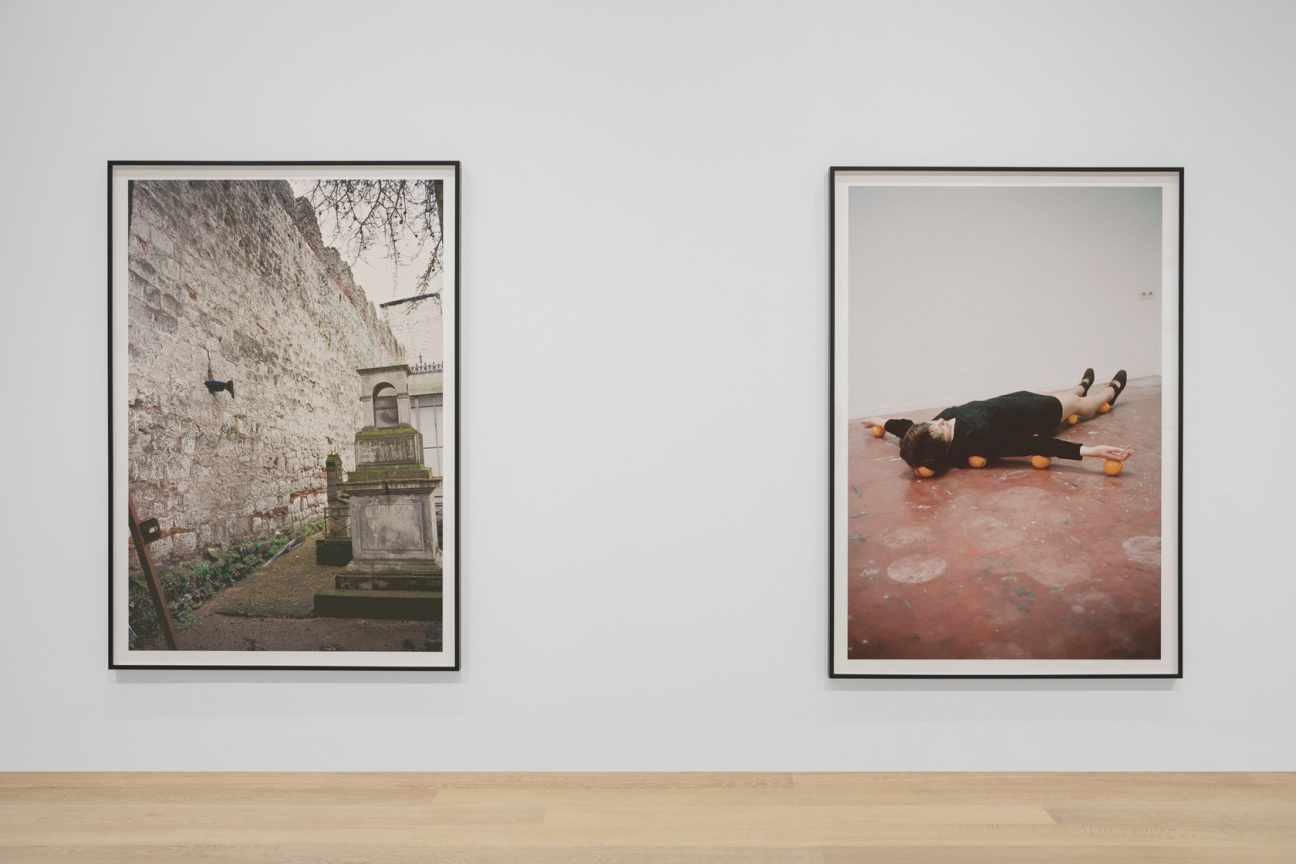
Wurm: In the beginning, I was a young, unknown artist. When I did shows in Germany, people were staring at the objects, staring at me. Nobody went on the pedestals and did it. [It was] very different in Asia and in the [United] States because people like to perform, to interact, to be photographed… In the meantime, [this] changed because my work is more known now, and it's another perspective.
Tollefson: Rethinking sculpture and pulling apart all the tenets of sculpture, like weight, volume, time, and participation, those ideas really inform your paintings. You call them “Flat Sculptures.” Can you talk about how you came back to painting?
Wurm: I came back to painting four years ago in Greece. I was bored in the summer. There was this little shop in the city with colorful paints and canvases for hobbyists. I started to paint the titles of my works and of my shows, because the title changes the perspective dramatically. You either create a way for the people to follow, or you stop it by saying, “Stay out. It's my product, it's my work.”
I realized what I like so much in these works is that they're between the abstract and the concrete. What I was most interested in was creating this three-dimensionality on a flat surface. It's like when you have a ball of clay, and you let it fall, it becomes a flat circle.
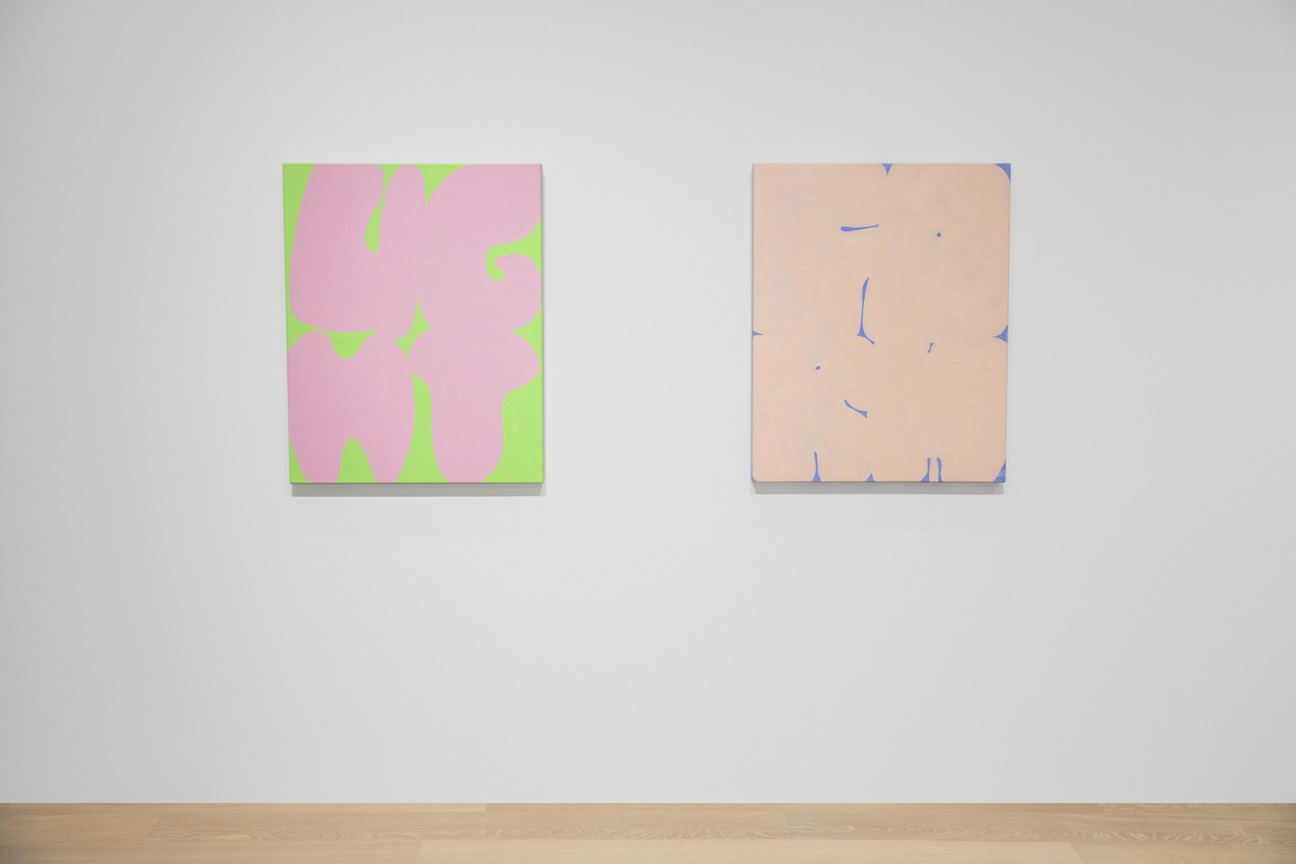
Tollefson: I'm also curious to hear about the other two works in the middle of the gallery that are more about the trace of the human body. Can you talk about how these are constructed and what you aim to do by having the trace of an action?
Wurm: I call them performative sculptures. They are very important for me because, having many big shows, I became one of those artists who [was] just producing at a distance. I lost connection to the work. I wanted to get back in with my own hands and my own feet and my own body, so I started to model.
We made benches, chairs, sideboards, and closets in real size, and models of houses, in a smaller size [out of] clay. Then I started to perform on the pieces. I was dancing on them. I was sometimes attacking them. I was jumping on them. I was physically attacking them with my hands, my shoes, my butt, and my body. All of a sudden, I was in the work again. I wanted that connection.
Palmer: You've been the model in your photographic works for a long time.
Wurm: Because I'm a cheap model. I'm always accessible.
Palmer: But what you're doing is also not glamorizing. In the early works, there are other things that are also self-critiques of your own hand as an artist rather than a celebration.
Wurm: I invite people to follow my instructions. Sometimes I step over borders. I don’t not want to create the feeling that I make fun of people or that I disrespect them, so I make an idiot of myself. [Then it] is much easier to also invite others to play with themselves, to play with their entity, and to play with the art.
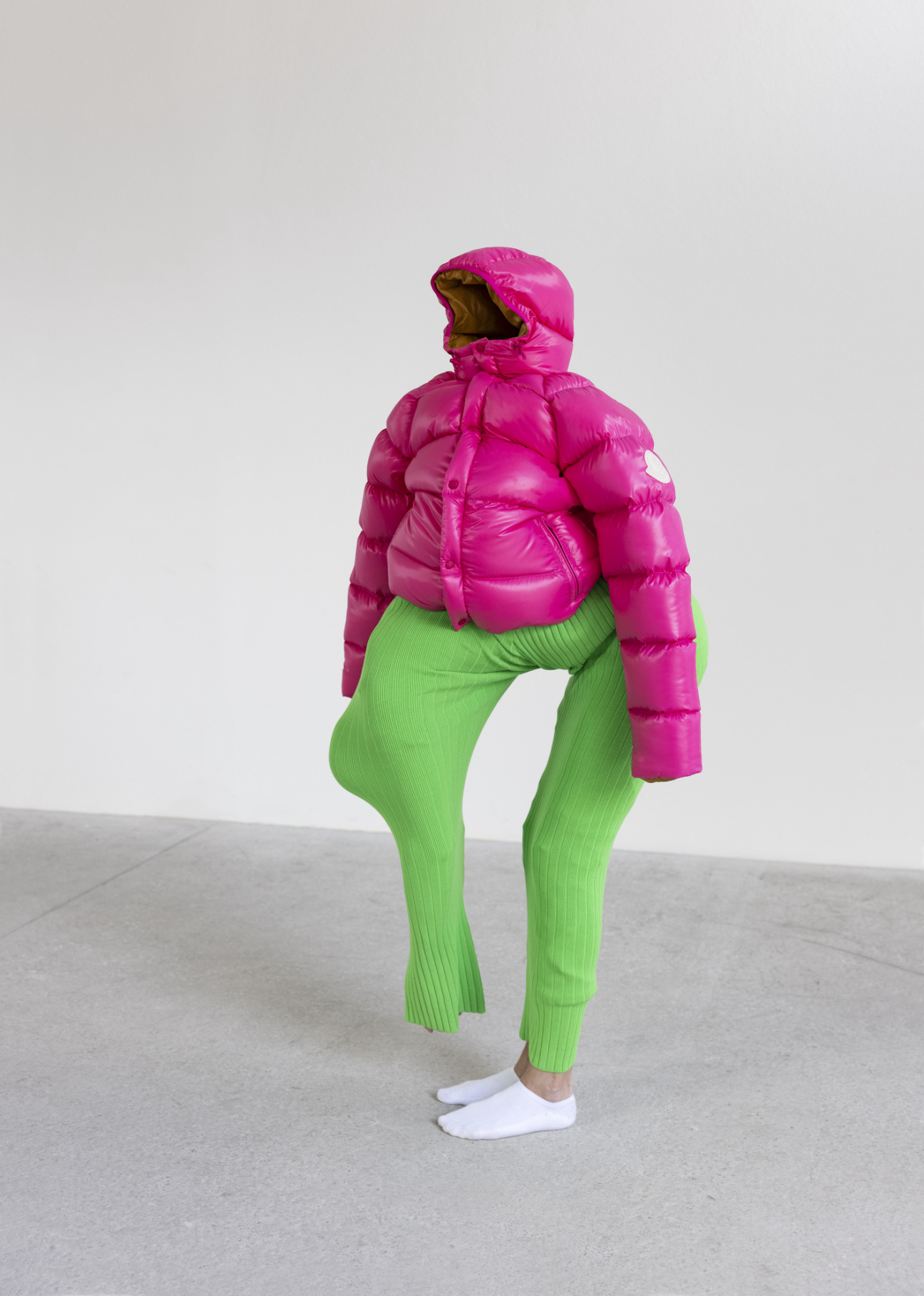
Tollefson: Can you talk a little bit about the fashion collaborations in this show?
Wurm: When I was a young artist and started the notion of sculpture, I realized traditional three-dimensional sculptures from Roman or Greek periods show big bodies, horses or athletes, but they're only defined by a very thin layer of bronze. The massive body is defined by skin. We have skin, and we have clothes. This is our second skin. With clothes, you can squeeze them, you can lay them flat on the floor, but you can also put them over a big person, or over a small person. You can create volume with clothes very easily by them not having volume.
Palmer: Some of your early explorations with that, putting on all the sweaters, are not only a reflection on clothing itself and its relationship to the body, but how clothing functions in society.
Wurm: I realized I opened doors to other aspects. To the social aspect [for example], because when I asked people to wear the entire wardrobe, at the same time, layer by layer on top of each other, they became sculptural. At the same time, it was a work about homeless people. It’s [also] about consumerism.
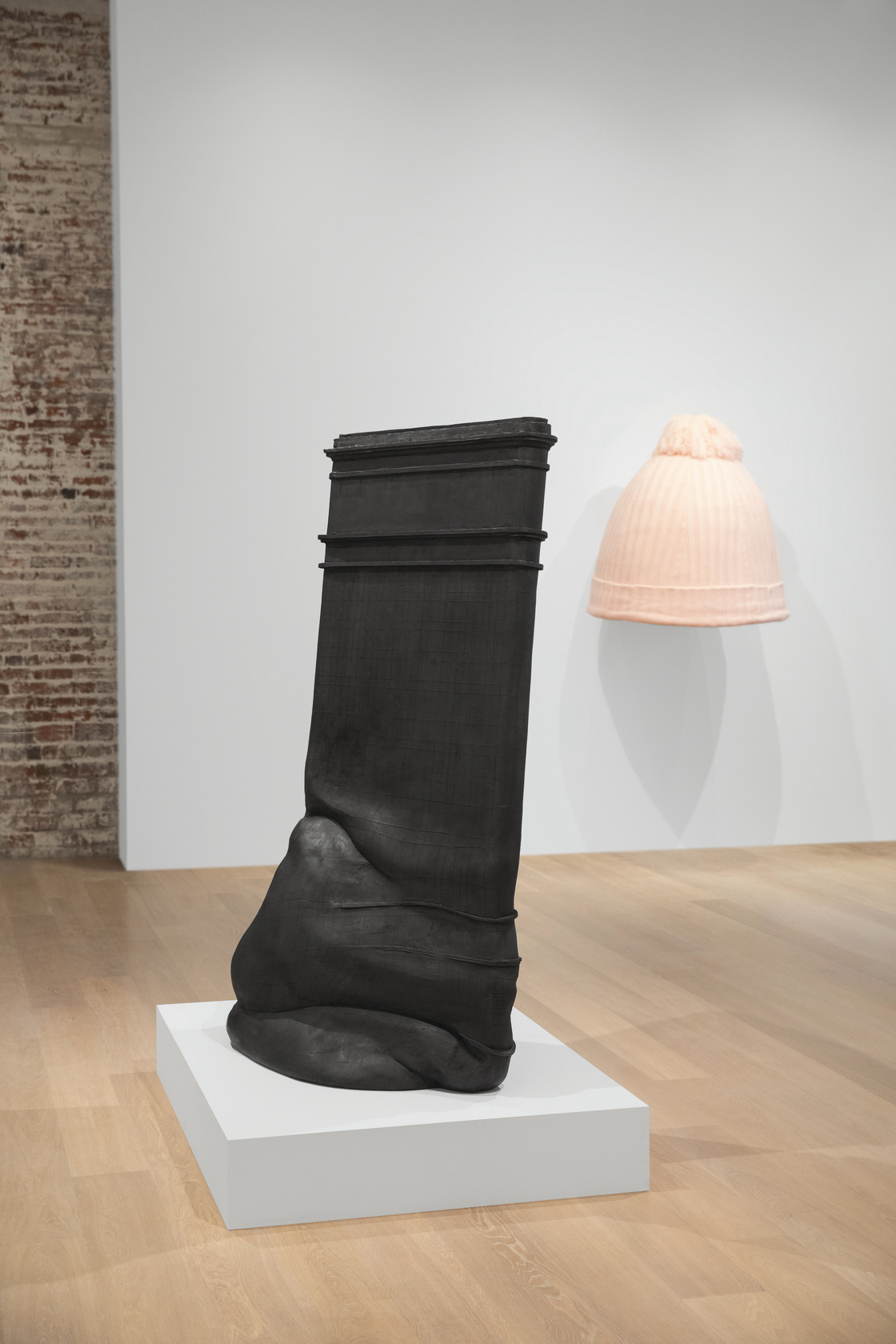
Palmer: It's fascinating because when you're [working] for an editorial or for a fashion brand, it might not necessarily be great advertising, but it's an examination of these issues, and it's a rejection of commodification and advertising. I wonder if you think about that when it comes to work in editorial for fashion, or work with Red Hot Chili Peppers—the differences and advantages or disadvantages of work in different venues?
Wurm: I love art; it’s my life. But I would also like to step outside and do something outside. This is also a critique of my work. Everywhere everybody who is able to look can come and see pieces, like a big car and a melting house. The accessibility is low. But of course, as I'm very much interested in philosophy and psychology, I'm interested in connecting my work with the absurd on one side and the paradoxical on the other side.
Palmer: It's almost like a Trojan horse. I see a misreading of your work, like, “Oh, that's funny, that doesn't mean anything.” I worry sometimes that social media exacerbates that, but it's clear that your work really has a lot at stake. “Hot,” the title of the exhibition, is not only hot and fun, but it's also about global warming. You're addressing your time.
“Hot” by Erwin Wurm is on view through January 15, 2024 at the SCAD Museum of Art in Savannah, Georgia.










 in your life?
in your life?

